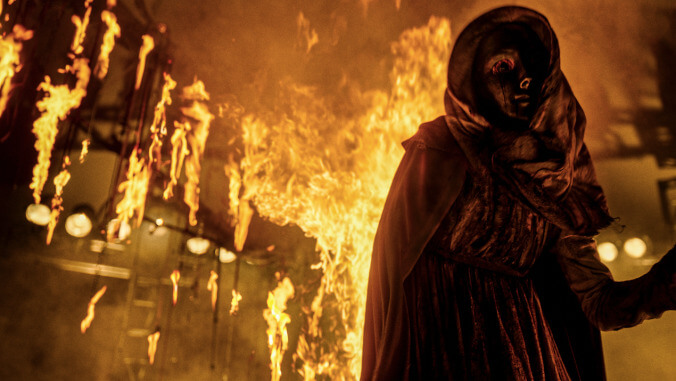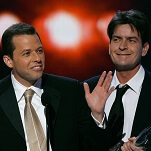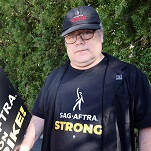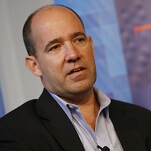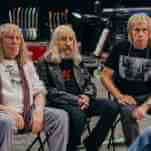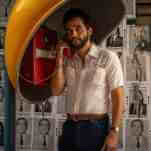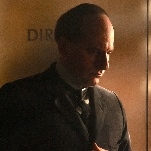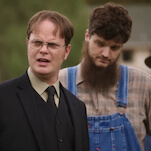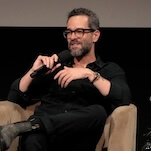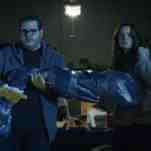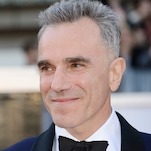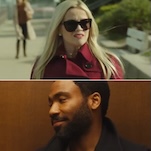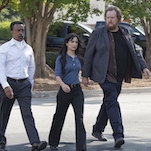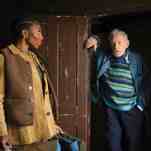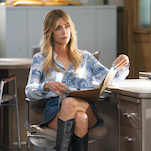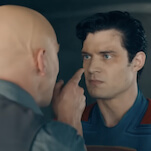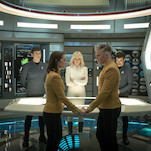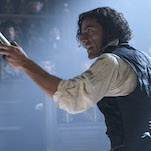A good Catholic horror movie does more than exploit the dread of the devout. Like the most gifted of fire-and-brimstone evangelists, it makes that fear
, sending a chill of religious terror up the aisles and down the spines of even the staunchest atheists. It makes believers out of nonbelievers, if only for a couple pea-soup-drenched hours.
, which arrives this Easter weekend to tempt the most god-fearing and least virus-fearing back into theaters, plainly aspires to a canon of Hollywood nightmares pulled from Sunday school curriculum. Yet despite its earnest warnings about a wolf draped in sheep’s clothing, the film never taps into the spooky power of the scripture’s most enduring scare tactics. This is the flimsiest of hokum, possessing all the gravity of a bible salesman hocking his wares outside the subway.
In the small Massachusetts town of Banfield, a miracle has occurred. Alice (Cricket Brown), a teenager who’s been deaf and mute since birth, can suddenly hear and speak! It was the Virgin Mary, she insists, who supplied her with these gifts—a claim that becomes more plausible when Alice starts acting as a faith healer in her Christian community, banishing cancer and paralysis while relaying the messages of the Holy Mother whispering into her newly functioning ears. For disgraced journalist Gerry Fenn (Jeffrey Dean Morgan), this remarkable event offers a chance for redemption: Several years after getting caught fabricating facts, à la Stephen Glass, Gerry has found himself at the center of breaking news. Whether Alice is the real deal or not, he’s got the exclusive access that could salvage his flagging career. (Gerry stumbles into the story while trying to cobble together a $150 tabloid piece; if nothing else, The Unholy taps into the bone-chilling horror of the freelance hustle.)
Morgan, with his bemused drawl and conman grin (that balancing act between smarm and charm that lands him so many magnetic scoundrel roles), is ideally cast as a voice of skepticism: He’s a fine audience surrogate, almost standing outside the story and looking in—and, as it turns out, a walking emblem of the film’s own sensationalized opportunism. The Unholy has the stately aura (and endless speechifying) of a sermon, but it’s really a creaky nothing of a B-movie, like a chintzy Halloween exhibit set up inside an old church. It would take no religious scholar, or even a diligent student of genre, to guess that Alice’s supernatural mentor may be sitting a little south of heaven. The plot comes to involve creepy porcelain dolls nestled in hollows, statues crying blood, the impossible date of February 31, and a Black Sunday flashback filmed from the point of view of the condemned. Mostly, though, The Unholy is a platform for its generic secret beastie: a clawed, staggering anti-deity brought to life through some shockingly shoddy special effects and popping up every few minutes or so to puncture the air of pious respectability with a cheap jump scare.
Making his debut behind the camera after a lucrative career penning Disney franchise extensions and forgettable blockbusters, writer-director Evan Spiliotopoulos flirts with some genuinely provocative directions, only to drop them in favor of half-assed Omen moves. What would it be like to be instantly thrust into a world of sound after a lifetime of silence? The Unholy ventures no guesses—Alice is grateful and beaming, adjusting with no trouble to her new sensorial reality. Early into the movie, the Vatican sends an investigator (Diogo Morgado) to verify that the miracles are legit; that the holiest of institutions would deploy an official skeptic is intriguing (and apparently true to life), but Spiliotopoulos does so little with this agent of the church that his scenes could easily be cut. The movie, adapted from James Herbert’s 1983 novel Shrine, reduces all of its characters to mouthpieces, trading portentous talking points about the power and danger of faith. (Cary Elwes, Katie Aselton, and William Sadler are among the fine actors wrestling hopelessly with dialogue that seems scrawled in stone, impossible to deliver with any passion.)
The closest thing the film has to a surprise is the revelation, in the end credits, that Sam Raimi produced it. The Deadite conjurer made his own Old Testament chiller a few years ago with a delirious funhouse prank of moral comeuppance, Drag Me To Hell. In its demonic-slapstick way, that movie genuinely keyed its audience into a deeply ingrained fear of damnation—it gave the threat of eternal Catholic punishment a primal monster-movie immediacy. Despite Raimi’s involvement, there’s no such madman conviction to The Unholy. In the end, it’s a straightforward warning about not falling for false prophets, draped in a lot of secondhand fright-flick tactics. Maybe the lesson can be extended to church- and moviegoers alike: Beware solemn schlock, which comes to you in The Exorcist’s clothing but inwardly is Stigmata at best.
